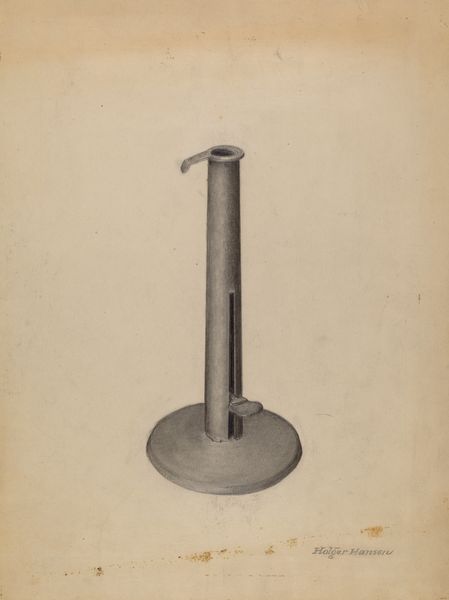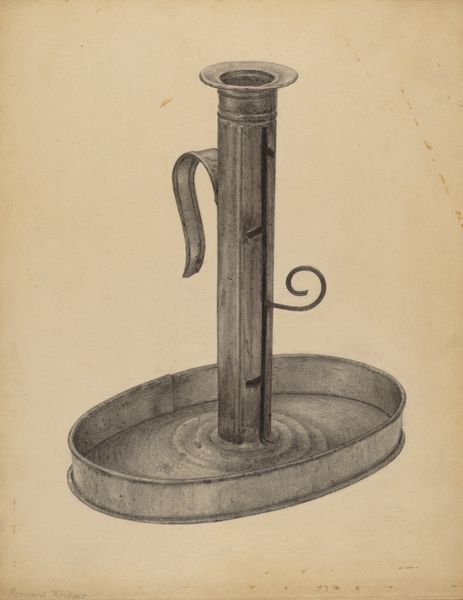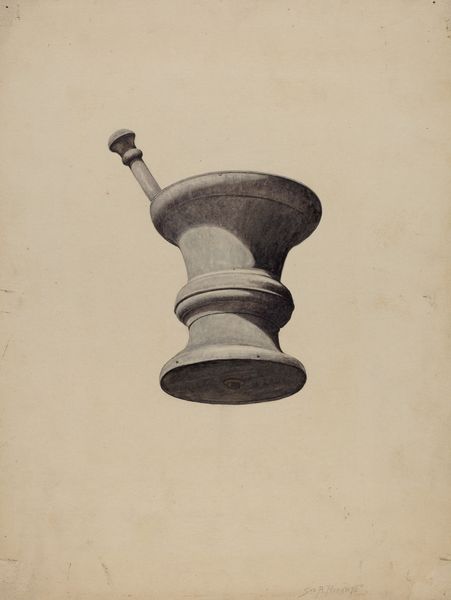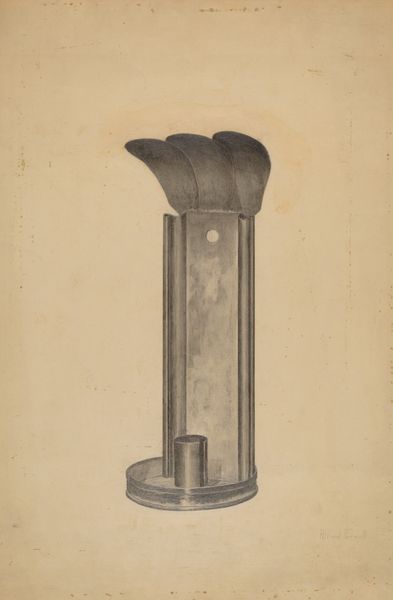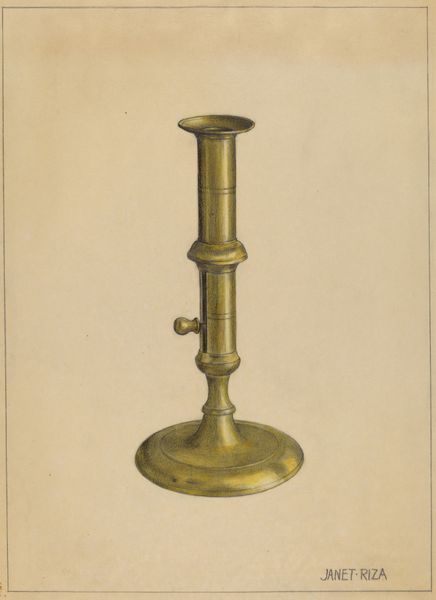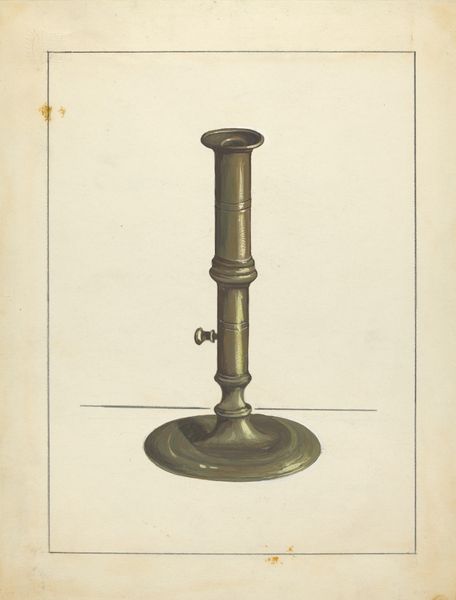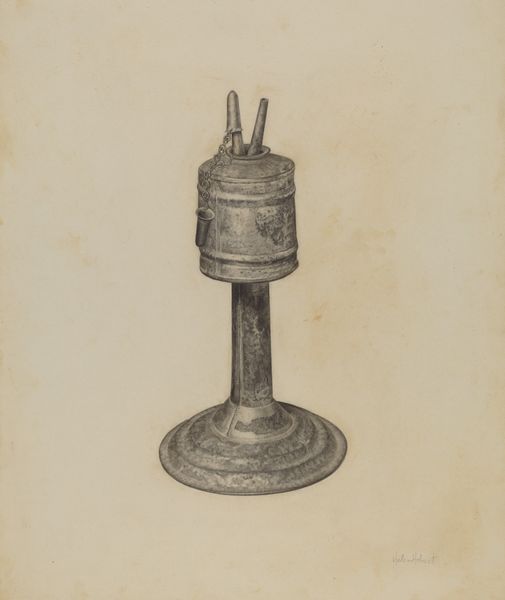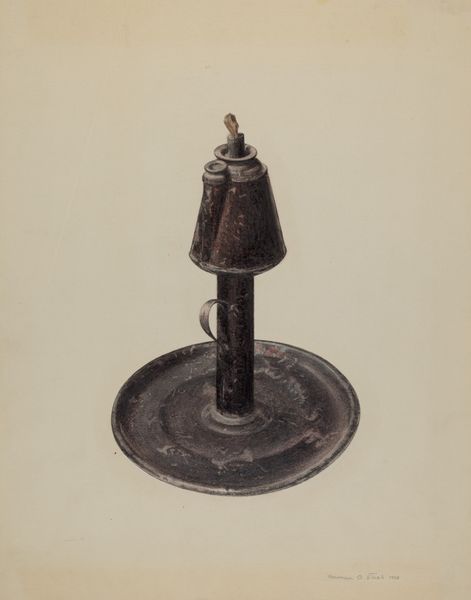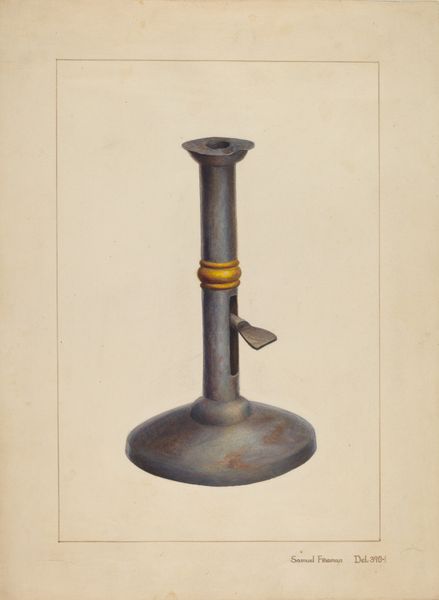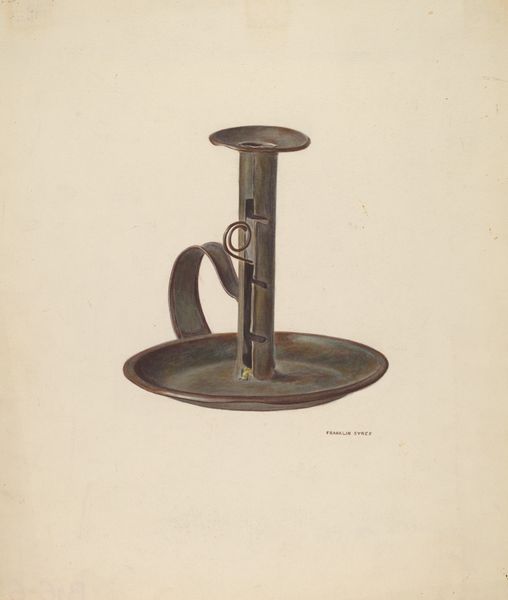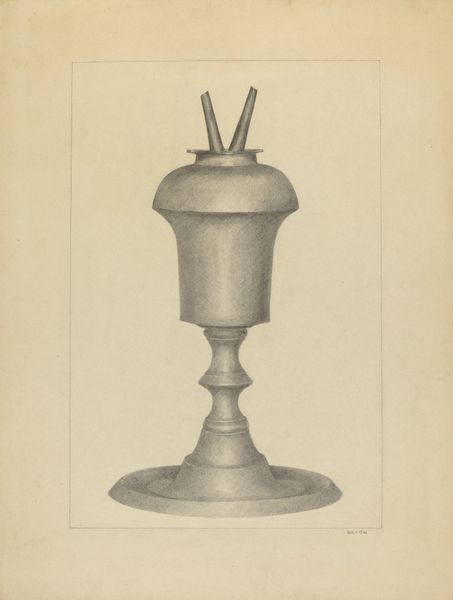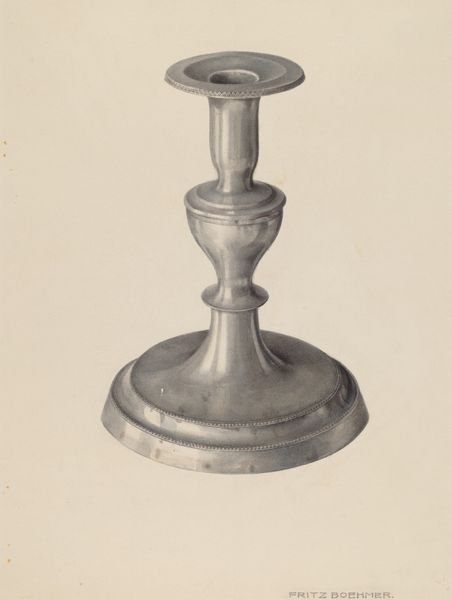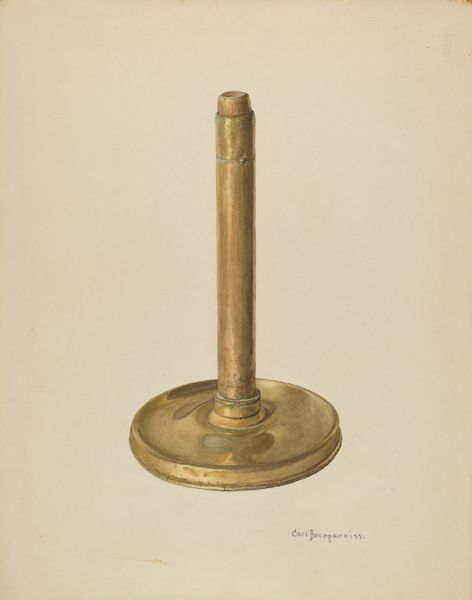
drawing, pencil, graphite
#
drawing
#
charcoal drawing
#
pencil
#
graphite
#
academic-art
#
realism
Dimensions: overall: 28.9 x 22.9 cm (11 3/8 x 9 in.) Original IAD Object: 4" wide; 7" high
Copyright: National Gallery of Art: CC0 1.0
Curator: Benjamin Resnick's graphite and charcoal drawing, "Candlestick," circa 1938, offers us a remarkably simple composition. Editor: The first thing that strikes me is how stark and somewhat melancholic it appears. There's a very deliberate use of chiaroscuro here; the dramatic contrast enhances its sculptural form. Curator: Consider the historical context: This was the tail end of the Great Depression, right before World War II. The candlestick, a humble object associated with domesticity and perhaps meager light during hard times, takes on a certain symbolism of resilience. Editor: I agree it's humble, but there’s also a striking monumentality to its rendering. Observe how Resnick builds up volume through gradations of tone, achieving a very convincing illusion of three-dimensionality. The eye travels along the curved base, up the cylindrical shaft, noting how light describes its metallic nature. Curator: I think that materiality speaks volumes when we look at the cultural weight of resourcefulness during that era. Candles themselves were probably a luxury for some families; to depict this object elevates the everyday experience of working-class communities. The lack of flamboyance emphasizes honest, hard labor. Editor: I understand your reading, yet I’m also struck by the pure formalism here. The geometry—circles, cylinders—create a harmonic whole. Resnick transforms an object into a study of pure form and tonal modulation. The play of shadow is exquisite! Curator: And the fact that it's rendered in monochrome further pushes this idea of paring down to essentials during an era where widespread color photography was available but perhaps beyond reach for ordinary folk, an access confined to upper economic echelons. Editor: So, would you say the essence of the work then is rooted in how this ordinary candlestick captures complex tensions across form, subject, and history? Curator: Precisely. It reminds us of the stories embedded in the most common artifacts—a visual testimony that encapsulates its epoch through a familiar shape. Editor: It gives us so much to consider about not just what we're seeing, but how and why, doesn't it? Curator: Indeed, an eloquent lesson told by an object so commonplace, made unique with delicate details.
Comments
No comments
Be the first to comment and join the conversation on the ultimate creative platform.
